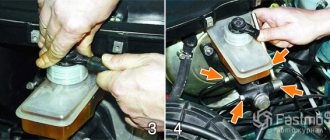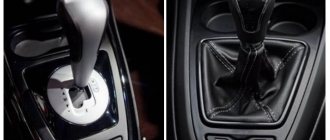Thank you all for your feedback in the comments to my text and to the video report from Sochi. Almost two weeks have passed since the test drive, but the discussion of the Vesta station wagon, as far as I can see, has not yet completely cooled down, so I decided to go over the most important questions and collect the answers in a separate post. I also wanted to share a few clarifications that I brought from Sochi, but only now I was able to confirm and formulate them.
So, in order.
Vesta is not instead of Opel
I am completely reasonable, I would never change an Opel for a Lada, and this was not even discussed. In the video report, I expressed myself more clearly: the Insignia remains, it has run 23 thousand kilometers, does not sneeze, for the most part my wife drives it, and there are no thoughts of parting with this car at all. And Vesta is about adventure. Hence all the hesitation, because there was no plan for a second car for the family, there are few available funds now, a loan is looming, and at the same time there is no clear understanding of what tomorrow has in store for all of us. In a word, everything is like everyone else, and I can list the reasons not to get involved in this story endlessly. But still, even now, after the test drive, the temptation remains to give up on all these warning “indicator lights” and buy, and then whatever happens. Moreover, it is already clear that the holivar around this car will not subside very soon, and, in an amicable way, you need to be in the know.
Will there be an automatic?
Right before the test drive in Sochi, Serega Tsyganov bombarded the Internet with news about “automatic machines” on Ladas. Allegedly, AvtoVAZ decided to introduce a CVT and revive hydromechanics. Both, of course, are from Jatco (75% owned by Nissan). This scenario really surprised me, because it was significantly different from what I heard at VAZ in May. Then they hinted to me about the appearance of a CVT in Vesta, moreover, at that time it was already being tested in full, paired with the 1.6 engine, but the launch was planned only for 2018. If my memory serves me correctly, this was due to the need to conduct winter tests in Russia.
Jatco CVT7 CVTs for compact front-wheel drive cars (pictured on the left - version JF015E) are used by Nissan Juke, Nissan Sylphy, Nissan Note, Renault Samsung SM3/Fluence, as well as Chevrolet Spark and Suzuki Swift cars. The four-speed automatic JF414E (pictured on the right) today, apart from AvtoVAZ (Lada and Datsun), is used only by Geely on the MK model
And they told me to “forget” about the “automatic”, since Jatco is winding down the project of its old four-speed, which means the “grantomat” will be retiring. Now, according to Tsyganov, this transmission is being revived, modernized and even localized in order to be used again with VAZ engines. And the variator is supposedly only for Alliance engines. And this segregation seems especially strange to me, because there are almost no foreign engines left on Ladas: it has been gone for a long time on Vesta, and the last unit has been preserved only on Largus, but even there it is about to be replaced by a VAZ sixteen-valve engine. Tsyganov has reason to believe that the Nissan 1.6 engine will eventually be returned to Vesta, and in the long term AvtoVAZ will generally move towards switching to Alliance engines instead of its own. My VAZ interlocutors in Sochi were stingy in their comments on this issue and only noted that work with the CVT continues. That's why I "imhanu".
Tsyganov rarely smokes without fire, and if a cloud of information smog has appeared over the topic of hydromechanics, then the hard work of the AvtoVAZ “think tank” could be an explanation for this. After all, it is clear that the market is asking for an affordable traditional “automatic”, and that the localization of one common modern transmission for the entire Russian automobile industry (as many would like) is still very, very far away, and that in this segment there will not be another affordable transmission quickly find, and that even if Jatco closes the 4AT project, then it is certainly possible to negotiate with the Japanese to buy out the license and release this box in Russia. But you need to understand whether the economic return from such a “machine machine” will be higher than the funds that will have to be invested in this venture? I do not exclude that from a business point of view, it will be more profitable for AvtoVAZ to be content with existing “automatic substitutes”.
In a word, if you are without water on jelly, then for now count only on the variator.
And now about the clarifications that I brought directly from Sochi.
Trunk with organizers totals 385 liters
We knew from the very beginning that the volume of the station wagon’s trunk under the curtain would be the same as that of the sedan (that is, 480 liters), but in the summer press release about the interior equipment, AvtoVAZ said that “the space under the raised floor provides an additional 95 liters.” ", from which everyone drew a logical conclusion: without organizers, Vesta will have 575 liters - great!
It turned out that everything is not quite like that. At a press conference in Sochi after the first day of the test drive, September 25, I was very surprised when I heard that 480 liters is the maximum that is available under the curtain with the back of the sofa raised and without organizers. That is, an error crept into the original VAZ press release, and in fact, 95 liters should not be added, but subtracted. Therefore, keep in mind that with two boxes and a second floor, only 385 liters of usable volume will remain in the trunk of the Vesta SW. And this is completely confirmed by my real impressions. True, then in Sochi this amendment also meant for me that the story about loading the trunk needed to be completely re-shot, since I had already spoken into the camera about 575 liters. We also corrected the numbers in the text on the website, but, of course, we didn’t have time to publish it in time, because on the morning of September 25 the issue was already on sale.
Rear disc brakes are like Kalina Sport, but...
. borrowed from Renault Megane/Fluence/Clio cars. With the origin of the ZDT on the SW Cross version, it turned out to be almost a detective story. In May, during a visit to Tolyatti, I was in the laboratory where new brakes for Vesta were being prepared and tested. Then the specialists told me that her discs were new, and the calipers were “like those on Kalina Sport.” I wrote in the paper version of my material that both the disc and the caliper are VAZ’s own. However, during the test drive in Sochi, the VAZ people corrected me: the calipers were still not VAZ, but from the Renault component catalog, and the L52 project, that is, Logan II, was mentioned as a donor. I again made corrections to the online version of the material and re-recorded the stand-up for the video. But only in Moscow, I came to my senses and remembered: Logan doesn’t have rear disc brakes!
Ok, there is only one car in the world on the Global Access platform (so, let me remind you, the entire Logan-Duster-XRAY-Kaptur-Lodgy family is now called) with discs instead of drums on the rear axle - this is the Sandero RS, which exists only in Brazil, but it’s unlikely that Vesta had his calipers. And I could hardly imagine anything about Kalina Sport: this doesn’t happen to me. And then the other day an explanation came from Tolyatti that puts everything in its place.
So, SW Cross uses the same rear brake mechanism as Kalina Sport and Granta Sport, but TRW supplies it for all these cars. And if we go into detail, the cylinder diameter is 34 mm, it is designed for a disc with a thickness of 11 mm, and the distance between the brake mounting bolts is 90 mm. At the same time, a similar rear brake TRW is used on Renault cars (models Megan, Clio, Fluence, Scenic and Wind), matches the VAZ caliper in cylinder diameter, but is designed for a disc 8 mm thick and has 82 mm between the mounting bolts.
Sequence of actions when changing the oil
To drain used oil, you will need to carry out the following procedures:
- Remove the lower engine crankcase protection if the specified part is installed (if not, proceed to the next step). To do this, you need to unscrew the mounting bolts of the shield from the bottom side. This action may not be necessary, since the manufacturers of the Lada Vesta made a special hole in the protection, but a situation may arise when the drain plug sticks to the tank or does not unscrew due to corrosion. In this case, you may need a lever or even a hammer.
- You need to place a waste container under the drain hole. It can be used as a self-prepared 5-liter mineral water bottle. The LADA VESTA oil system contains about 4 liters; when selecting a container for drained oil, you need to take this figure into account.
- Unscrew the drain plug and drain the oil.
- After the oil has flowed out, thoroughly clean and wipe the underside of the engine compartment.
- To remove the filter, you will need a special tool that allows you to reach around the filter housing. Being on an overpass, the car suspension is in the lower position, which creates problems with free access to the filter. In a service station, a lift is used that allows this procedure to be performed from below. When working independently, you have to remove the filter from the top.
- Install a new filter. In this case, it does not really matter whether oil will be poured into it beforehand or whether it will go there when the engine is started. The main thing is that it is of good quality. The filter can be screwed in all the way without the use of tools.
- Tighten the drain plug. It has a vulcanized washer. This gasket allows for a tighter connection and avoids leakage. If defects are found, the washer should be replaced.
- Fill with new oil. For VAZ units, its volume will be about four liters. Since old oil may remain in the system, at the end of the procedure you should especially monitor the situation to avoid overflow.
- Start the engine at idle speed. Wait until the oil level indicator goes out and add the required amount. Tighten the plug tightly and check the engine compartment for leaks.
Unscheduled maintenance
Well, the last, but perhaps the most vital observation for me personally from Sochi. It will probably be more difficult for me to get along with the “mechanics” than I thought. I returned to Moscow after a test drive with an aching knee, but I didn’t attach any importance to it, because an old injury bothers me from time to time in bad weather. However, soon my leg stopped bending, and when the doctor asked if I had excessive stress on the joint, I remembered that I had driven through the mountains for two days without literally lifting my foot off the clutch pedal. And before that, I don’t even remember the last time I drove so intensively with a manual, because almost all the cars that I got from the Auto Review editorial office as part of tests or the “Trying It On” section had automatic transmissions. In short, the knee eventually calmed down, but there was more food for thought: apparently, before deciding to buy a Lada with “mechanics”, I myself will need to undergo something like unscheduled maintenance.
The choice between replacing and repairing a manual transmission
French-made manual transmissions are very repairable, but spare parts for their restoration are not always available. Therefore, sometimes it is easier to purchase a new or contract unit. The cost for a new manual transmission starts from 40 thousand rubles. The contract unit has a price of 6,000 rubles.
Domestic-made mechanical boxes are mainly repaired. From a major overhaul to the next overhaul, a manual transmission can cover 150-200 thousand km. Car owners usually buy a new box or contract unit only if the unit has serious deformations or significant wear. From an official dealer, a mechanic costs from 35 thousand rubles, and from a car wrecker - from 5,000 rubles.
Owner reviews
Two years ago, a new product from the domestic AvtoVAZ, the Lada Vesta with a robotic gearbox, went on sale. The engineers abandoned the classic torque converter (Jatco JF414E) due to its high cost and lack of a production platform for maintenance.
AMT - this is how “robot” is designated; it was developed by the domestic design bureau of AvtoVAZ based on the mechanical type of ZF class gearbox. Of course, in terms of gear shift speed, AMT is inferior to foreign analogues from Europe and America, but it looks quite decent on the Russian market.
LADA Vesta is equipped with AMT paired with a 1.6-liter / 106-horsepower and 1.8-liter / 122-horsepower power unit. The price per copy varies from 640,000 to 850,000 rubles. AMT is also installed on Vesta SW and LADA Vesta Cross with an engine capacity of 1.8 liters. Starting price from 705,000 rubles.
Comparison of configurations
Lada Vesta is a newer model of AVTOVAZ, and accordingly has a number of modern options that are not available from Granta:
- Side airbags
- Automatic activation of the hazard warning lights during emergency braking
- Automatic door unlocking and hazard warning lights in the event of a collision
- Emergency warning system ERA-GLONASS
- Center armrest with angle adjustment
- Illumination of entry and exit points in the front doors
- Reach-adjustable steering column
- Driver's seat with height adjustment and lumbar support
- Rear View Camera
- Cooled glove box
- Cruise control and speed limiter
- Multifunction steering wheel
- Multimedia system with navigation
The TOP version of Lada Vesta Exclusive has even more options:
- Seat upholstery combined eco-leather/Alcantara
- Leather steering wheel
- Textile rugs
- Pads on the pedals
- LED interior lighting
- Reinforced tinted rear windows
- Spoiler
- Decorative exhaust pipe nozzle
- 16" alloy wheels original
Reviews from car owners
| № | Positive |
| 1. | Vladimir , 37 years old (drive2.ru): I like the AMT on the Lada Vesta, it’s better than the manual one. It's unusual to control gears with the gas pedal. The harder you press the accelerator, the lower the gear becomes. To change to increased speed after a kickdown, release the pedal a little. In general, you need to get used to it. At first I was confused about what and how. Once I almost collided with the vehicle in front. |
| 2. | Dmitry , 42 years old (prom.ua): I bought Vesta last year with AMT. I had some doubts about the correctness of my choice, but overall I am pleased with the results of a year of operation. Shifts are not the fastest, but quite tolerable. The torque converter in the first models had better smoothness. I had a chance to drive old versions of Vesta. On the highway, the car is economical, rides smoothly, quickly picks up speed, and is maneuverable when overtaking. I drove 17,000 km without capital investments, repairs, only scheduled maintenance. My review of the Lada Vesta automatic is only positive. |
| 3. | Alexey , 38 years old (drom.ru): The first few hundred kilometers the impressions were incomprehensible. I haven’t encountered AMT before, only manual and CVT. The first “step” was as if according to the instructions: I got behind the wheel, turned on the automatic mode on the transmission, released the brake, increased the gas and drove off. It’s not entirely clear why it shifts to fifth gear already at 80 km/h. This is low for a car with such an engine. Therefore, I switch to the manual, dial 90 - 95 km/h, and then engage fifth. The motor allows you to reach a speed of up to 125 km/h in fourth gear. I noticed that Vesta’s consumption on the robot is 0.5 liters less than the manual one. It's a small thing, but nice. |
| 4. | Petrovich , 47 years old (rozetka.ua): Before the Lada Vesta Cross automatic, I had an Opel Corsa, I took the Lada in the Comfort configuration with a radio. It took me a while to get used to AMT, and I even got confused. I avoided traffic lights on the “tenth road” so as not to mess things up. In general, the opinion is positive about the box, too. In comparison with mechanics, the transition to higher gears is a little slower, but this is not important for me. The good news is that you don’t need to warm it up in the cold for a long time. I sat down, started it for 3 minutes and drove off. The accelerator is very sensitive, it needs adaptation after the mechanics. I hope that the resource of 75,000 km goes out with a bang. |
| Negative | |
| 5. | Gennady Dmitrievich , 53 years old (prom.ua): Lada Vesta Station wagon automatic for a year, has already driven 18,000 km, I think this is above average. The robot works properly, but there is a rustling noise from time to time. At the service station they said that the release bearing needs to be tightened. The car is new, but already forced to repair something. It is obvious that the quality of the domestic manufacturer is not yet at the proper level, the model is crude and requires improvements. |
| 6. | Vladimir , 48 years old (Bibika.ru): first experience with a robotic gearbox, and a sad one. The release bearing failed at 15,000 km and was replaced at the workshop under warranty. After the seal leaked, I also had to replace it. I am dissatisfied with the quality, I think that the model needs careful improvement. |
| 7. | Semyon Sergeevich , 49 years old (drive2.ru): I took a Lada Vesta from scratch, there were no complaints about the work. After winter, the gears began to engage with a delay, and the clutch began to slip. In general, I visited the service station and agreed on a comprehensive diagnosis under warranty. My comrades advised me to take a manual, but I didn’t listen and took an automatic. |
| 8. | Stepan Vasilyevich , 45 years old (Avtodispatcher.ru): after two years of active operation of the Lada Vesta Cross, the release bearing flew off. I think that this is not my fault, since I drove carefully, did not drive, and treated it with care. |
Let's crawl out of here
I notice changes almost immediately after leaving the editorial gates. How I missed the “crawling” Creeping Mode during all two and a half years of living together with Vesta! Especially when parking in a confined space in winter, when there is ice under the wheels. The car started to move only after pressing the gas. Now the robot acts like a classic automatic machine: for the car to move, you just need to release the brake pedal. Moreover, there is enough traction to overcome the speed bump, to which the front wheels are located close, from a standstill without pressing the gas. This means that the robot can handle winter snow and ice mounds in the yard.
Vesta does not start as quickly as cars with classical hydromechanics. The box thinks for a second, then slowly engages the gear, and only after that does the movement begin. I noticed only one problem with the robot version 2.0: the car starts moving, making the engine tremble, as if an inexperienced driver had not yet gotten used to the manual gearbox. On the one hand, this is understandable. In the “creeping” mode, there is no need for high engine speeds; the car must move off very smoothly, without jerking, so it is necessary to smoothly close the clutch discs with minimal gas supply. The electronics are trying, but you need to operate the clutch even more gently. The shaking is not very pleasant, and such treatment is not good for the units. Therefore, when jostling in a traffic jam, it is better not to twitch once again, “creeping” 20–30 centimeters. And when maneuvering in the yard and in the parking lot, the “creeping” mode is just right!
Vesta can crawl both forward and backward. The speed supported by the automatic transmission depends on the gear engaged. On the first it is 7–8 km/h, on the second – 14–15 km/h, on the rear – 5–6 km/h. Foolproof protection is provided: the mode is turned off if you put the car on the parking brake or open the driver's door. I checked it - it works properly.
On the editorial Vesta, the algorithm of the hill start assist system is a little annoying. After releasing the brake pedal, the brake mechanisms hold the car from rolling back for a couple of seconds so that the driver has time to calmly move his foot from the brake to the gas. The function is configured in such a way that the automation “does not see” small slopes and therefore does not work. For all the time that Vesta has been rolling off the assembly line, this “anti-rollback” feature has not been cured - Vesta with the updated robot also moves backwards when starting up a hill. And you shouldn’t rely on the “creeping” mode: when you release the brake, the automatic system engages first gear more slowly than at the command from the accelerator pedal - the car has time to roll back. So, in a traffic jam on a slight rise, you will have to use the old scheme to speed up the car with the gas pedal.
Design features and device of the JR5 Lada Vesta gearbox
The domestic robot largely copies the boxes of the German concern ZF. The AMT actuator consists of:
- clutch activation actuator;
- speed change actuator;
- clutch forks;
- backstage for controlling gears inside the car;
- input shaft speed sensor.
The design of a typical robot with electric drive and a single clutch disc. In Europe and Asia, such technology was abandoned five years ago in favor of preselective models, but on the domestic market this is a new product.
What is AMT?
The robotic transmission (AMT) is a kind of symbiosis of the usual “automatic” and manual transmission. Essentially, this is a manual transmission in which an electronic unit is responsible for shifting gears. One of the decisive factors that determined Vesta’s choice in favor of the AMT was its reliability and low cost, compared to a conventional AT.
The main elements of AMT are:
- manual transmission;
- Clutch;
- Control system;
- Clutch and gear drive.
Of course, each type of AMT has its own characteristic features, but this is the general design.
Pros and cons of AMT compared to mechanics
| Wheel formula | 4 / 2 | ||
| Motor location | Front | ||
| Body type / number of seats / doors | Sedan / 5 / 4 | ||
| Base | 2635 | ||
| DSHV | 4410 / 1764 / 1497 | ||
| Clearance | 178 | ||
| Trunk volume | 480 | ||
| Power unit | 21129 | ||
| Supply system | Injection | ||
| Number of cylinders / arrangement | 4 / in-line | ||
| Volume | 1596 | 1774 | 1596 |
| Power | 106 | 122 | 106 |
| Maximum speed | 182 | 186 | 182 |
| Acceleration up to 100 km/h | 11,2 | 12,1 | 14,1 |
| Fuel consumption (G/T/SM) | 9,3 / 5,5 / 6,9 | 9,3 / 6,0 / 7,2 | 9,0 / 5,3 / 6,6 |
| Weight | 1230 | ||
| Volume of the tank | 55 | ||
| Number of gears | 5 | ||
| Advantages | Flaws |
| Gear activation clarity | Cost of major repairs after the end of the warranty period |
| Resetting several gears at the same time by sharply pressing the accelerator pedal | The price of a car on the secondary market is 30 - 40 thousand lower compared to a manual one |
| Fuel economy with moderate driving style | Delays when upshifting |
| No need to warm up for a long time at subzero temperatures | |
| It is allowed to start the car from a pusher at a speed of no lower than 7 km/h and no more than 24 km/h | |
| Unpretentious, does not require frequent maintenance |
Typical manual transmission problems identified during operation
The domestic manual transmission has virtually no weaknesses. It is devoid of serious design flaws and has excellent reliability. There are questions mainly about French mechanics. The internal CV joint of the Renault box is placed directly into the unit. When the constant velocity joint is destroyed, its parts enter the working area of the gearbox. As a result, repairs with disassembly of the unit are required. A car owner may encounter such a problem when the mileage exceeds 50-70 thousand km.
During the operation of a Lada Vesta with JH3 mechanics, some car owners are faced with a situation where the amount of oil in the manual transmission becomes less. This is due to the CV joint boot. If it is damaged, the lubricant leaves the box little by little. This trouble can happen, for example, if you accidentally hit a branch.
It is important for the car owner to change the oil in the manual transmission in a timely manner. Otherwise, the unit will be subject to increased wear and major repairs will be required after a mileage of 90-130 thousand
km.
Malfunctions and ways to eliminate them
| Malfunctions | Remedies |
| Shocks when transitioning between 1st – 2nd – 3rd gear | Prevention and replacement of the clutch disc, basket, bearing, guide bushing |
| Hum, rustling in the area where the AMT is located | The contact point of the clutch disc is shifted |
| Clutch slipping, loss of traction | Insufficient transmission oil level in the gearbox |
| The car moves jerkily | Clogged lubricant supply channels in the valve body. Cleaning, blowing with a stream of compressed air |
| Periodic emergency operation with self-shutdown | The electrical supply circuit is damaged. |
Checking integrity with a multimeter, replacing sections
Service life of AMT according to instructions and actual
The AvtoVAZ manufacturer indicates a warranty life of an automatic transmission of 75,000 km or 5 years.
In general, AMT takes care of the designated resource, but already in the first ten it is necessary to carry out small works:
- replacing the clutch disc;
- flashing of the electronic control unit;
- tightening the pressure bearing;
- replacing the sealing gland on the AMT.
Conclusion
The presence of a robotic version of the gearbox on the Lada Vesta was greeted positively by many car enthusiasts.
Although breakdowns do occur, they are not critical; in some cases they can be prevented by careful driving and timely maintenance. The final decision rests with the owner of the technical device.
Video - Review from a real owner
With the appearance on the market of a new product from AvtoVAZ, a lot of interest was born in this car. The vehicle has a dynamic appearance and decent tactical and technical characteristics. The Lada Vesta automatic is a significant alternative to versions with a manual transmission. Each model is characterized not only by the power of the internal combustion engine, the chassis, but also by the gearbox. A large number of consumers are worried about the choice: manual or automatic. Here, a lot depends on the needs of the owner and the equipment of the car itself.
AvtoVAZ has already used a robotic gearbox on previous versions of the Lada model range (Granta, Kalina). At that moment, AMT completely replaced automatics. The opinions of owners and professionals agree that this box has enormous advantages, and the French Renault even has plans to introduce a “robot” from Russian engineers to its models.
The price of a Lada Vesta with automatic transmission varies depending on the configuration. The cheapest option will be the Classic 1.6 AMT, which can be purchased for 595 thousand rubles. Luxe Multimedia 1.8 with automatic transmission is purchased for 740,000 rubles. The cost of a car with a manual transmission is lower than the price with an automatic transmission.
Vesta with a 7-speed classic automatic transmission from the domestic company KATE: to be or not to be?
Vesta with a machine gun. It’s with an automatic transmission, and not with a CVT or a robot - isn’t it a dream? Is this not what thousands of Russians want? There was a rumor on the Internet that the domestic company KATE, which developed an automatic transmission for the Cortege project, has developed an automatic transmission for budget B- and C-class cars, which can be installed on Vesta and, in general, the entire Lada model range. Is this true or not?
Such a box really exists, it is truly domestic, truly seven-speed and truly classic and reliable. at least in theory.
Although everything is not so theoretical. In 2006, a prototype of Kalina with a KATE assault rifle was made. Then in 2010, AvtoVAZ even said that it had entered into a contract with KATE for production preparation. Moreover, the KATE automatic machine is installed on the domestic roadster “Crimea”, made on the basis of the same Kalina and has passed more than 5000 km of real road tests. Not much, but there hasn’t been a single malfunction during this time, everything works organically.
It would seem that the box can be installed on both Vesta and Grant. Especially now, when “Cortege” is starting to gain momentum, but... as usual, something didn’t work out. To be more precise, AvtoVAZ is simply not allowed to use domestic developments, actually forcing them to use alliance (Renault-Nissan-AvtoVAZ) CVTs and Jatco automatics.
In short, we won’t see Vesta with a Russian machine gun. This, by the way, was confirmed by AvtoVAZ last year. And also, for reference, the owner of KATE is the wife of Sergei Chemezov, the general director of Rostec, and the box itself is the brainchild and development of Baumanka graduates. And the “Crimea” project based on Kalina was also done by graduates of MSTU. Bauman. In short, either they drank the money and ran away, or AvtoVAZ is really being tied up by foreign partners who don’t want to invest money in an unknown Russian product.
What do you think? Would you like to see the Lada with an automatic transmission, and not be content with a dull robot, a prehistoric four-speed automatic transmission and an expensive Jatco CVT?
Attention!
This channel may be unexpectedly blocked. In this case, I will continue to run this channel (D8) , so subscribe to it right now.
Source
What kind of automatic machine does the Lada Vesta have?
Automatic and manual transmissions The new product has two transmission options: domestic automatic and French manual. Since many tests of the car were carried out (automatic test drive video below), we can confidently talk about the pros and cons of the first and second gearboxes.
The difference between AMT (robot) and automatic transmission is quite significant. On the latter, switching occurs without driver participation. The first, in fact, is a mechanics modified by an electrical unit.
The global market has shown that the frequency of implementation of AMT in vehicles is beginning to fall, this is due to the following factors:
- the mechanism operates with small and unauthorized delays, which makes the driver very nervous;
- the robot switches gearbox gears quite sharply, this is noted by a large number of owners who have a colossal love for dynamic driving;
- The robot does not reduce gears in a timely manner on slopes, and when driving up a mountain in reverse, it excessively “rips” the gears.
Main technical characteristics
Fuel consumption and other technical characteristics of the Lada Vesta depend on which gearbox is installed on the car. You can learn more about the main parameters of a vehicle with various transmissions in the tables below.
Actual fuel consumption differs from that stated by the manufacturer. This is due both to the influence of the environment and to the general condition of the vehicle. Below are the results of a survey of owners of Lada Vesta with manual transmission and AMT in one of the social networks.
Features of AMT in comparison with Lada Vesta automatic
Robotic gearbox Russian designers decided to take a risk and create their own robot with five stages, relying on the following advantages:
- Production is cheaper than designing a manual transmission and an automatic transmission. On the dealer market, a “robot” costs about 20,000 rubles, which is two times cheaper than an automatic transmission (automatic transmission).
- The fuel consumption of a Lada Vesta automatic or robot is significantly reduced.
- There is no need for frequent diagnostics and repair of the robot.
- The mechanism has built-in protection against unauthorized engagement of the gear at any speed.
- The automatic transmission consumes three times more oil than the Lada Vesta robotic gearbox.
- During driving there is no vibration of the lever, smooth clutch is ensured even during sudden pressure on the gas pedal.
In their development, domestic designers took into account the experience of foreign engineers and began to use German actuators (actuators), as well as French-made clutches in their transmissions. An option for clutch wear compensation is installed inside the AMT Lada Vesta. In addition, it does not need to be warmed up before starting work. An automated manual transmission weighs much less than an automatic transmission, which reduces gas mileage when driving.
A Lada Vesta car with a robotic gearbox cannot be left on a rolling surface without fixing the hand brake. Otherwise, it will move backward, which can lead to an emergency.
Advantages of using car services
Offering the best prices in Moscow for Lada Vesta I automatic transmission repairs, our service stations provide high quality of all preventive and repair work.
Clients consider the main advantages of constant cooperation with our company to be the professionalism of experienced specialists, the speed of work, and our own one-year guarantee on the quality of repairs.
Additional bonuses for customers will be:
- free consultations with auto mechanics, personal order support;
- convenient transport accessibility of services;
- the ability to call a free tow truck;
- range of additional services.
An electronic application on the website or a simple call to the number will help you order diagnostics, maintenance, and repair of automatic transmissions at a time convenient for you.
Most opinions read on the Internet boil down to the following theses: in principle, a robot with one clutch cannot work normally, and the Togliatti people should have made Vesta with a classic automatic.
To the second statement, I immediately have a counter question. Was it not you, dear ones, who accused Vesta of allegedly inflated prices? There is no domestically developed serial automatic transmission. This means that you should be prepared to pay 25–30 thousand extra for an imported unit. And not to the price of a car with three pedals, but to the cost of the “robotic” version. For example, for Granta and Kalina, the difference between the versions with Russian automated mechanics and the Japanese Jatco gearbox is at least 30 thousand rubles. Taking into account the slight difference in configuration, we get just about 25 thousand “net” difference. So let's move on to a constructive discussion.
There are several ways to avoid this. You can release the pedal slightly as soon as the transmission indicates its intention to shift. Or you can use the manual mode, also easing the pressure on the gas. In the second case, you yourself determine the moments of gear changes: full control, as when driving an honest mechanics, but without the need to operate the clutch pedal. I note that these tricks do not affect the switching time, but the discomfort from the “plugs” during acceleration goes away.
When driving smoothly, no problems arise. You can even enjoy the numbers on the trip computer screen. Exact measurements are still to come, but I can already share some observations. According to the passport, the Almera mentioned above weighs the same as Vesta. With its 102 hp. and with a 4-speed automatic transmission, I have never seen a consumption of less than 10 l/100 km: it turned out to be a very gluttonous bunch! Lada showed a maximum of 9.3 l/100 km over 2000 km. Operation can be considered the same: light traffic jams, periodic trips to the highway, and so far Vesta has only experienced frosts with temperatures not lower than -10 degrees.
The question of the clutch life and survivability of the box, in general, remains open. We will try to create conditions for the machine so that there is a basis for reasoning on this topic.
Automatic transmission problems for the Russian new car
Automatic transmission The idea of installing an automatic transmission is in the minds of Russian designers, but to bring it to life, special circumstances and high costs are needed. Management is already negotiating with foreign investors on the construction of a new enterprise, which will be equipped with everything necessary. Don’t forget: the Togliatti plant is focused on selling cars to the middle class of consumers.
- Today it is quite difficult to introduce expensive automation into the Lada Vesta.
- To create your own high-quality development, you need a base. In the case of automatic transmission, VAZ does not have one. The use of foreign parts increases the cost, which negatively affects sales themselves.
- The automated mode consumes much more fuel than its robotic counterpart. If we add here the cost of the second point, we get an incredibly expensive design. It is quite understandable that credit is given to AMT, which had a basic prototype for constructing its own box for the Lada Vesta.
Information has appeared that they are launching a test drive to examine the operation of the automatic transmission (4 gears). VAZ directors rejected this news and said that if development begins, the automatic will be six-speed.
If you thoroughly understand which is better: a Lada Vesta automatic or a robot, it will take a lot of time. Both modifications have their own distinct pros and cons, visible to the naked eye.
CVT for Lada Vesta
The Franco-Japanese corporation Renault Nissan is providing Russian designers with a CVT, which they plan to install on AvtoVAZ’s new product. This device has proven itself when used on units that require a stepless reduction or increase in the gear ratio.
- the variator creates smoothness during vehicle acceleration;
- the mechanism reduces the car's fuel consumption;
- expensive repairs are the only drawback of the variator.
Russian enthusiasts will have to wait for this device to arrive on the markets, as it will be installed together with a reliable and powerful new engine from the Renault-Nissan alliance. Now is the time to evaluate the work of both the robot and the automatic transmission, and then compare them with a rare phenomenon for the domestic automotive industry - a CVT. It’s difficult to say how much this device costs.











